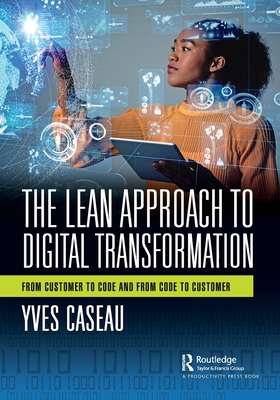Lean Software Development in Action
暫譯: 精實軟體開發實務
Andrea Janes, Giancarlo Succi
- 出版商: Springer
- 出版日期: 2014-12-02
- 售價: $2,420
- 貴賓價: 9.5 折 $2,299
- 語言: 英文
- 頁數: 393
- 裝訂: Hardcover
- ISBN: 3662441780
- ISBN-13: 9783662441787
海外代購書籍(需單獨結帳)
商品描述
This book illustrates how goal-oriented, automated measurement can be used to create Lean organizations and to facilitate the development of Lean software, while also demonstrating the practical implementation of Lean software development by combining tried and trusted tools.
In order to be successful, a Lean orientation of software development has to go hand in hand with a company’s overall business strategy. To achieve this, two interrelated aspects require special attention: measurement and experience management. In this book, Janes and Succi provide the necessary knowledge to establish “Lean software company thinking,” while also exploiting the latest approaches to software measurement. A comprehensive, company-wide measurement approach is exactly what companies need in order to align their activities to the demands of their stakeholders, to their business strategy, etc. With the automatic, non-invasive measurement approach proposed in this book, even small and medium-sized enterprises that do not have the resources to introduce heavyweight processes will be able to make their software development processes considerably more Lean.
The book is divided into three parts. Part I, “Motivation for Lean Software Development,” explains just what “Lean Production” means, why it can be advantageous to apply Lean concepts to software engineering, and which existing approaches are best suited to achieving this. Part II, “The Pillars of Lean Software Development,” presents the tools needed to achieve Lean software development: Non-invasive Measurement, the Goal Question Metric approach, and the Experience Factory. Finally, Part III, “Lean Software Development in Action,” shows how different tools can be combined to enable Lean Thinking in software development.
The book primarily addresses the needs of all those working in the field of software engineering who want to understand how to establish an efficient and effective software development process. This group includes developers, managers, and students pursuing an M.Sc. degree in software engineering.
商品描述(中文翻譯)
這本書說明了如何利用以目標為導向的自動化測量來創建精實組織,並促進精實軟體的開發,同時展示了通過結合經過驗證的工具來實現精實軟體開發的實際應用。
為了成功,軟體開發的精實導向必須與公司的整體商業策略相輔相成。為了達成這一目標,有兩個相互關聯的方面需要特別關注:測量和經驗管理。在這本書中,Janes 和 Succi 提供了建立「精實軟體公司思維」所需的知識,同時利用最新的軟體測量方法。全面的公司範圍測量方法正是公司所需,以便將其活動與利益相關者的需求、商業策略等對齊。透過本書提出的自動化、非侵入式測量方法,即使是沒有資源引入繁重流程的小型和中型企業,也能夠使其軟體開發流程變得更加精實。
本書分為三個部分。第一部分「精實軟體開發的動機」解釋了「精實生產」的含義,為何將精實概念應用於軟體工程會帶來優勢,以及哪些現有方法最適合實現這一目標。第二部分「精實軟體開發的支柱」介紹了實現精實軟體開發所需的工具:非侵入式測量、目標問題度量(Goal Question Metric)方法和經驗工廠。最後,第三部分「精實軟體開發的實踐」展示了如何將不同的工具結合起來,以促進軟體開發中的精實思維。
本書主要針對所有希望了解如何建立高效且有效的軟體開發流程的軟體工程領域工作者的需求。這個群體包括開發人員、管理者以及攻讀軟體工程碩士學位的學生。
























.jpg)





